- Home
- John Pearson
Notorious: The Immortal Legend of the Kray Twins
Notorious: The Immortal Legend of the Kray Twins Read online
Notorious
How the Kray Twins Made
Themselves Immortal
John Pearson
This eBook is copyright material and must not be copied, reproduced, transferred, distributed, leased, licensed or publicly performed or used in any way except as specifically permitted in writing by the publishers, as allowed under the terms and conditions under which it was purchased or as strictly permitted by applicable copyright law. Any unauthorised distribution or use of this text may be a direct infringement of the author’s and publisher’s rights and those responsible may be liable in law accordingly.
Version 1.0
Epub ISBN 9781409099963
www.randomhouse.co.uk
Published by Century in 2010
Copyright © John Pearson 2010
John Pearson has asserted his right under the Copyright, Designs and Patents Act 1988 to be identified as the author of this work
This book is sold subject to the condition that it shall not, by way of trade or otherwise, be lent, resold, hired out, or otherwise circulated without the publisher’s prior consent in any form of binding or cover other than that in which it is published and without a similar condition including this condition being imposed on the subsequent purchaser
First published in the United Kingdom in 2010 by
Century
Random House, 20 Vauxhall Bridge Road,
London, SW1V 2SA
www.randomhouse.co.uk
Addresses for companies within The Random House Group Limited can be found at: www.randomhouse.co.uk
The Random House Group Limited Reg. No. 954009
A CIP catalogue record for this book is available from the British Library
ISBN 9781846051524
The Random House Group Limited supports The Forest Stewardship Council (FSC), the leading international forest certification organisation. All our titles that are printed on Greenpeace approved FSC certified paper carry the FSC logo. Our paper procurement policy can be found at
www.rbooks.co.uk/environment
Typeset by SX Composing DTP, Rayleigh, Essex
Printed and bound in the United Kingdom by
CPI Mackays, Chatham, ME5 8TD
The author and publisher have made all reasonable efforts to contact copyright holders for permission and apologise for any omissions or errors in the form of credits given. Corrections may be made to future printings.
Contents
Cover
Title
Copyright
Dedication
Also by John Pearson
Praise
1 Introduction
2 The Trial: April 1969
3 Birth: 1934
4 Twins: 1937
5 East End
6 Crime as Destiny: 1954–48
7 God Bless the Royal Fusiliers: 1952–54
8 The Billiard Hall: 1954–59
9 Twins Apart
10 Esmerelda’s and After: 1960–64
11 Enter Boothby: 1964
12 Cover-up: August–September 1964
13 Blackmail: 1964–65
14 Sing, Fuck You, Sing!
15 Killing Cornell
16 Exit the Axeman
17 Invitation to a Sacrifice
18 The American Connection
19 Murder for Two
20 The Kingdom of the Krays
21 Showdown in New York
22 Remand
23 The Trial of the Century
24 End Game
Appendix
Plates
For Mark Booth
Also by John Pearson
Non-fiction
Bluebird and the Dead Lake
The Persuasion Industry (with Graham Turner)
The Life of Ian Fleming
Arena: The Story of the Colosseum
The Profession of Violence
Edward the Rake
Barbara Cartland: The Crusader in Pink
Facades: Edith, Osbert and Sacheverell Sitwell
Stags and Serpents: The Cavendish Dukes of Devonshire
The Ultimate Family: The Making of the House of Windsor
Citadel of the Heart: Winston and the Churchill Dynasty
Painfully Rich: J. Paul Getty and His Heirs
Blood Royal: The Story of the Spencers and the Royals
The Cult of Violence
One of the Family: The Englishman and the Mafia
The Gamblers: Aspinall, Goldsmsith and the Murder of Lord Lucan
Fiction
Gone to Timbuctoo
The Life of James Bond
The Kindness of Dr Avicenna
The Authorised Life of Biggles
The Bellamy Saga
Praise for The Profession of Violence by John Pearson
‘The most famous biography of criminal life to have been published in Britain … it has become something of a cult among the young.’
Time Out
‘The person who best understood what made the Kray industry tick and the Kray fascination blossom remains John Pearson whose book The Profession of Violence summed the two men up.’
Deborah Orr, the Independent
‘All credit to Mr Pearson for a brave and disturbing book.’
Daily Express
‘The biography is brave and well-written … an exciting read.’ The Times
‘Mr Pearson has produced a scrupulous dossier of the Krays’ weird career.’
Daily Telegraph
‘The book is extremely well-written and is fitting deadpan.’
New Statesman
‘From an early age Ron and I had taken it for granted that whatever path we took we’d end up being famous’
1
Introduction
I SUPPOSE FEW THINGS in life are more disturbing for a writer than the awareness of unfinished business, and having to accept that something you wrote about many years ago is unresolved – worse still, when you stumble on the truth that has eluded you for so long and it starts to haunt you. Which is what has recently been happening to me over the whole strange story of the Krays.
Back in 1967 when I first met them in the house which is now the stately home of former Rolling Stone Bill Wyman, I genuinely lacked the faintest notion of what I was in for, which was just as well. In some ways I was fortunate. It’s not every day that a pair of celebrated murderers invite a biographer to share their reminiscences, meet their family and friends, and write the story of their lives. Later I learned that, before asking me, their first choice had been Truman Capote who had declined – which showed that Truman wasn’t quite as silly as he seemed.
Time moved on. By the time my book was finished, nearly four years later, the Twins had been sent to prison for the rest of their natural lives, and I had spent six months of mine sitting through their remand hearing at the Old Street Magistrates’ Court, followed by their trial at the Old Bailey. By then I probably knew more about them than they knew themselves, and when my book was published in 1972 under the title The Profession of Violence they hated it – though later, when they saw what it was inadvertently doing for their prestige in jail, they changed their minds
Apart from the fact that, for reasons which I will explain later in this book, the project had all but bankrupted me, I was rather pleased with it. It has been in print ever since, and I’m told that it kicked-started a genre of so-called ‘true crime’ books, as well as a cottage industry of memoirs by almost anyone who believes that he can write and can claim the faintest contact with the Twins. At the last count there were over thirty of them. So when I heard that, after the Bible, The Profession had become the most widely read
book in HM Prisons, and Time Out magazine was hailing it as ‘the most famous biography of criminal life to have been published in Britain’, I felt I’d said all that needed to be said about the Krays, and that was that.
I had not reckoned with the Twins. Throughout their time in captivity I’d kept in touch with them, and by the time of their deaths – Ron in 1995, Reg six years later – and the grandiose East End funerals that followed, something very odd indeed had happened. It seemed that, having been celebrity criminals for years, they had finally achieved something more. There had been a film about them. Every London taxi driver over fifty seemed to have some story to tell about them, and their former bitter gangland enemy ‘Mad’ Frankie Fraser was currently conducting gobsmacked tourists round The Blind Beggar, the unlovely East End hostelry where Ron had gunned down his fellow villain, George Cornell. David Bailey’s photographs had, as the phrase goes, ‘iconised’ them, and when sociologists started writing learned papers about them it was clear that they had assumed their place in the social history of the Sixties. They were also something of a national obsession, and just as James Bond epitomises everything we take for granted in a secret agent and Sherlock Holmes is our ultimate detective, so the one word ‘Kray’ is embedded in our collective memory as accepted shorthand for the quintessential British gangster.
But who really were these two strange criminals whom I thought I knew so well? Why and how, out of all the variegated villains who have filled our newspapers and television screens during the last half-century, did it have to be the Krays, and they alone, who took their place beside Jack the Ripper as ‘iconic’ criminals of enduring fascination?
It was at their trial that I first sensed that something very strange indeed was going on, although, as so often with the Twins, it was hard to grasp exactly what it was. One thing I realised was how utterly unique they were, and that their role in the mythology of crime was nowhere near as simple as it seemed. There were certain things that both the Krays and the Establishment were determined to keep secret. But one thing and one alone stood out as the Everest point in their whole bizarre career, the scandal that for four long years before they were arrested had rendered them invulnerable. In fact, as I also finally discovered, there were actually not one but two quite separate scandals involving the Krays and the Establishment.
It was only in 1984, after the death of Baron Robert John Graham Boothby KBE, that I was able to outline the story of the scandal involving him and Ronnie Kray. Since then, papers recently released at the Public Record Office not only confirmed everything I wrote but revealed irrefutably the involvement of so many senior politicians on both sides of Parliament in suppressing the truth behind this whole unusual business that the cover-up must count as a separate scandal of vertiginous cynicism by both sides of the political establishment. Whenever I think of it and of what ensued, it is the sheer cynicism of the Establishment that somehow still offends me.
Perhaps it barely matters if our rulers lie to us in public – as long as their colleagues are willing to protect them. Still less may it matter if politicians take their sexual pleasures in the company of criminals, provided that the media and members of the judiciary are prepared to hush it up. And if gangsters thrive and men get murdered as a consequence, perhaps that doesn’t really matter either, as long as the police have been warned off and the press are stopped from mentioning the truth. But if things like this do matter, then the story that I have to tell simply cannot be ignored.
In relating it I have been fortunate to find much new material, and I make no apologies for allowing it to form so large a part of my narrative. For not only are the Boothby scandal and the subsequent cover-up crucial to an understanding of the rise and ultimate destruction of the Krays, they also form an all-important segment of the history of the Sixties. Above all they offer us an unparalleled cautionary tale on the perils of corruption and complacency in our democratic body politic.
Apart from which, for me at any rate, the enduring fascination of the weird story of the Twins will always end where it began – with them, and with that whole doomed twin relationship which locked them so disastrously together, making them, both biologically and criminally, utterly unique. Because of this, there is for me something else in their story which gets overlooked – a twisted tragedy, which I hope I also manage to convey and so complete the task that I accepted so light-heartedly more than forty years ago.
I would like to thank Mike Abrahams, Frank Kurylo, Leon Morgan, Stewart Grimshaw, Pam Hirsch, Chris Jenks, Ben Hytner, Ian Sinclair, Nick Lloyd, Wilf Pine, Anke Lueddeke, Steve Wraithe, Michael Thornton, Julian Bell, Nick Davies, Dick Hobbs, Stan Frankland, Derek Jameson, Harriet Vyner, Jacqueline Williams, Justin de Villeneuve and Edda Tasiemka of the incomparable Hans Tasiemka Archive. I would also like to thank Neal and Harry Dickinson, and Edward Fry, who saved my sanity over my computer, and Penny Thomas, Mike Brooks and Tim Doyle for helping me to keep on walking. Ted Green and Ellie Grey were always there for me – so were my family and my wife Lynette who has been so wonderful that words fail me. Finally I must thank my saintly editor Katie Duce who ultimately made this book possible.
2
The Trial: April 1969
WHEN THE TRIAL was over, the judge, Sir Melford Stevenson, hung up his wig and scarlet robes, knowing that his greatest period of fame was over. The longest-running legal show in town, which had started with the remand hearings eleven months earlier, was concluding before him at the Old Bailey and like any impresario at the end of a successful run Sir Melford couldn’t help a certain feeling of regret. One by one he had dismissed his cast to the limbo of imprisonment. He had despised the lot of them, as he despised all criminals, but the truth was that he would miss them, especially the Twins.
He was only sorry that he couldn’t hang them. The ritual donning of the black cap, followed by the ancient litany condemning a murderer to death had always fascinated him. ‘You shall be taken hence to a place of execution and hanged by the neck until you are dead, and may God have mercy on your soul.’ What finer culmination to this monstrous trial could there have been? But his government had recently put capital punishment on hold and would soon abolish it for ever.
Still, what a trial it had been, with witness after witness betraying one another and relating tales of wickedness and cruelty from across what seemed at times to be the whole gamut of criminal humanity. It could all have gone very wrong indeed, and it was largely thanks to Sir Melford that it hadn’t. At the beginning of the trial when he had tried to make the ten defendants in the dock wear numbers round their necks (in order, so he said, to make it easier for the jury to identify them) and when all of them had angrily refused, Sir Melford had managed to control his temper and had accepted that his bright idea would never work. After a short recess to recover his dignity he had succeeded in continuing with the trial as if nothing untoward had happened. Even at the climax of the trial, when Reg Kray called the prosecuting counsel Kenneth Jones QC ‘a fat slob’, he took no notice. There had been just one curiously revealing moment, when Ron Kray had been giving his disjointed ‘evidence’ from the witness box and had made a passing reference to Lord Boothby. Having been carefully forewarned that this might happen, and what the consequences might be, Sir Melford had immediately blocked that dangerous line of reminiscence and the witness swiftly got the message.
And so, in spite of various distractions, everything had turned out as intended. The witnesses had been dismissed, the murderers and their accomplices found guilty, and despite the accounts of violence and betrayal, of sadism and sodomy, of bleeding hearts and bleeding faces, and the whole farrago of suffering humanity which Sir Melford had fairly patiently endured, nothing remotely like the truth about the Twins had actually emerged. But then, the last thing the Kray Twins wanted either was for the truth about themselves to be revealed in open court – nor, for that matter, had the prosecution wanted it. And nor, emphatically, had Sir Melford Stevenson.
So what had everyon
e been up to in this long and long-winded trial? Why all the huffing and puffing from so many turncoats, victims, senior policemen and half-baked gangsters, not to mention the hot air from so many sleek young barristers paid for by a grateful government? And what had happened to those fearsome allegations made against the Krays so many months before, when the trial began? Had they really been hand in glove with the American Mafia over their gambling rackets and the sale of stolen bearer bonds in Europe? Had one of the main prosecution witnesses been working, as he had claimed, for the US Secret Service? And what about the branding and the mutilation of their wretched victims, the bodies supposedly concreted into the pillars of the Chiswick flyover, not to mention the perversions, the hidden wealth, and the plans to kidnap the Pope and release President Tshombe of the Congo, fascinating stories which the prosecution had mentioned at the remand proceedings but subsequently had found no time to answer. And nor had anybody else.
Instead, the trial had finally boiled down to the fairly humdrum murders by the Twins of two fellow East End villains, one of them while sitting in a pub and armed with nothing more lethal than a pint of bitter, the other butchered while attempting to scramble through a window in a basement flat in Stoke Newington.
Was that meant to have the whole of Middle England shaking in its socks? Had that really been enough to turn the Kray Twins into the most feared and famous felons of the century? Forgive me, but did old Melford know something that we didn’t?
Of course he did. But, as is the privilege of the judiciary, he wasn’t letting on and one can only guess at why he felt such deep distaste for the principal defendants in this case. If he couldn’t top them, he didn’t hide the relish with which he did the next best thing, effectively condemning them to spend the remainder of their lives in prison. ‘I think society has earned a break from your activities. Accordingly I condemn you to thirty years in prison with a recommendation that in your case thirty years are a minimum of thirty years – no less. Jailer, take them down.’

 The Bellamy Saga
The Bellamy Saga Notorious: The Immortal Legend of the Kray Twins
Notorious: The Immortal Legend of the Kray Twins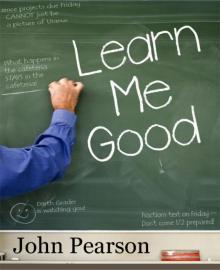 Learn Me Good
Learn Me Good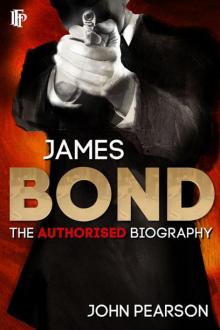 James Bond: The Authorised Biography
James Bond: The Authorised Biography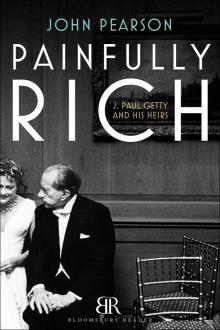 Painfully Rich
Painfully Rich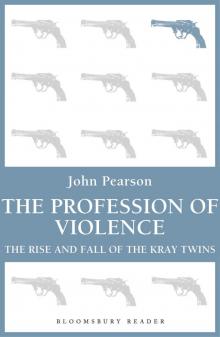 The Profession of Violence
The Profession of Violence Biggles
Biggles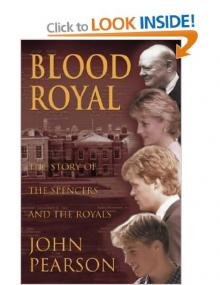 Blood Royal: The Story of the Spencers and the Royals
Blood Royal: The Story of the Spencers and the Royals